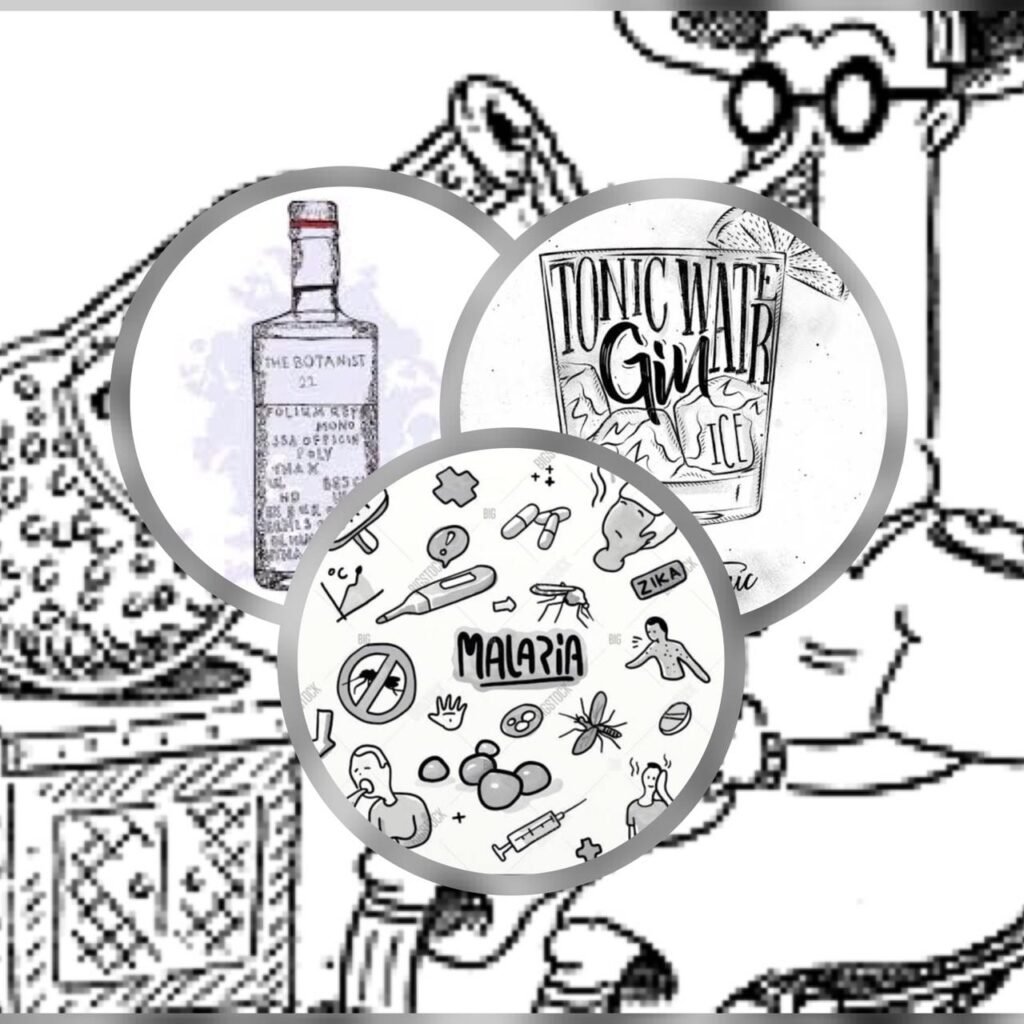It may appear to be an oxymoron to think of a healthy soft drink. A soft drink, as opposed to a hard drink, is one that does not include alcohol. So, ever thought of sipping a drink while challenging a threatening disease i.e malaria.
Erasmus Bond of London was granted the first patent for tonic water in 1858. Johann Jacob Schweppe’s firm, was the first to market with quinine-and-lime-infused mineral water in 1870. Schweppe himself did not survive to see the day, having died in 1821.
Tonic water is a sort of carbonated beverage that is commonly used in mixed beverages. The carbonated water contains a variety of flavoring botanical, including quinine, which is produced from cinchona bark and gives it its dry, bitter flavor. Tonic water contains various forms of sugar to wash off the bitter taste of quinine which in turn increases the calorie meter.


Talking about quinine, it was originally developed as a medicine to fight malaria. Quinine is safe to drink in minimal amounts, as found in tonic water. Powdered quinine, sugar, and soda water were among the earliest tonic waters. Since then, tonic water has become a popular liquor mixer, with gin and tonic being the most well-known. However, this doesn’t mean that tonic water can be taken as first-line treatment for malaria.
The Amazing Journey Of Gin Tonic
Gin and tonic is experiencing a vogue right now. Even Oasis sang, “I’m feeling supersonic, give me a gin and tonic”.
The legendary G-and-T may be found all over the world, from Spain, where it’s essentially the national drink, to our summer coasts. The gin and tonic may be the easiest drink to make, but it has a long and interesting history.
India’s purchase of Indian tonic water appears to be an unusual choice. After all, it was in 1825 that British Army soldiers stationed in India began mixing quinine with sugar, water, and gin to make a multi-tasking, malaria-fighting, and unintentionally delectable sun-downer.
Malaria was a recurring concern in India and other tropical places. As quinine was well known for fighting malarial infection, but quinine has a very bitter taste so, to make quinine more appetizing, British commanders in India in the early 1800s mixed it with water, sugar, lime, and gin which is a distilled spirit with some juniper taste and at least 40% alcohol by volume, and Gin And Tonic was formed. So, what we today consider a recreational beverage was once the British Raj’s most successful innovation.
“The gin and tonic have saved more Englishmen’s lives, and brains, than all the doctors in the Empire.”
By Winston Churchill


Quinine, which gives tonic water its slight bitterness, is also a key anti-malarial component that has been used for millennia to prevent the spread of this deadly illness. However, there is bad news for Gin & Tonic fans that drinking tonic water will not prevent you from malaria and even in fact, to get a dosage of quinine powerful enough to prevent malaria, you’d have to consume 67 liters of Gin and Tonic every day, so don’t forget your malaria pills on your next vacation, no matter how many G&Ts you consume.
During the summer, gin and tonic is a popular beverage. “considerable amounts (500 to 1,000 ml) of tonic water may, for a short amount of time, lead to quinine plasma levels near the lower limit of therapeutic effectiveness and may, in fact, produce transient suppression of parasites,” according to a 2004 research. Because the amount of medicine required “cannot be maintained with even enormous doses of tonic,” this technique of quinine ingestion was ineffective for malaria prevention. The authors came to the conclusion that it is not an effective malaria therapy. But the research do claim that gin and tonic is beneficial for killing malarial parasite up to some extent.
Influence Of Gin And Tonic In Global Market
Tonic water includes a significant quantity of quinine, which helps to prevent malaria and other leg-related medical problems. Over the projected period, these therapeutic features are projected to drive market expansion. Tonic water is a popular soft drink among spirits drinkers all around the world.
According to Technavio’s newest industry research analysis, the worldwide tonic water market is predicted to grow at a compound annual growth rate (CAGR) of almost 7% from 2019 to 2023. Furthermore the worldwide tonic water market was worth USD 1.72 billion in 2019, and it is predicted to increase at a CAGR of 7.2 percent from 2020 to 2027.
“Apart from the high consumption of gin, the increasing emergence of craft tonic water, the emergence of private label brands, and increasing product innovations are some major aspects that are expected to boost the growth of the global tonic water market.”
By senior analyst at Technavio
If gin and tonics are your drink of preference, go for it; but, if you’re concerned about overweight and health, a little bit every now and then is probably safe or you may make a healthy change by substituting sparkling water for tonic, which has the effervescent fizz but none of the sugar.
In comparison to traditional tonic water, most tonic water sold in stores nowadays contains just trace levels of quinine and is also less bitter.
So like almost everything in life, it can still be enjoyed in moderation. A well-balanced bitter tonic with delicate citrus flavors and a modest sweetness that doesn’t overpower your drink’s flavor.




